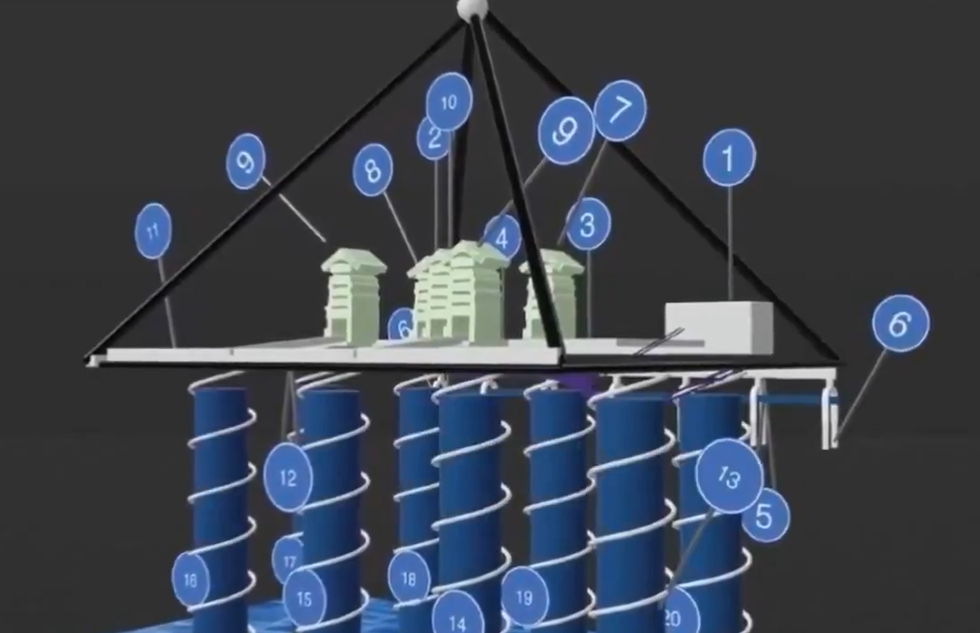Archaeology breakthrough as scientists claim 'vast underground city' in Egypt is tens of thousands of years older than the pyramids
Independent experts and Egyptian authorities have swiftly dismissed the claims as 'outlandish'
Don't Miss
Most Read
Trending on GB News
Italian researchers have made the extraordinary claim that structures beneath Egypt's Khafre Pyramid are approximately 38,000 years old – tens of thousands of years older than the pyramids themselves.
The controversial findings, presented last week, suggest the existence of a "vast underground city" that would dramatically rewrite human history if proven true.
Independent experts and Egyptian authorities have swiftly dismissed the claims as "outlandish" and "completely wrong".
The researchers claim to have identified eight descending wells beneath the pyramid, each measuring between 33 to 39 feet in diameter and extending at least 2,130 feet below the surface.

Italian researchers have made the extraordinary claim that structures beneath Egypt's Khafre Pyramid are approximately 38,000 years old – tens of thousands of years older than the pyramids themselves
Getty
Using radar pulses from satellites, the team created 3D images revealing staircase-like structures around each well.
At the bottom of these wells, they reported finding massive rectangular enclosures approximately 260 feet per side.
The team believes structures reach more than 4,000 feet below the pyramid's surface.
The team dated these ancient structures using interpretations of Egyptian texts, including chapter 149 of the Book of the Dead, which they claim describes "remnants of an advanced civilisation" predating dynastic Egypt.
They also cited the Turin King List, an ancient document listing rulers including gods and demigods who supposedly governed Egypt before recorded dynasties.
The researchers believe these texts reference a pre-existing civilisation that was destroyed by "a cataclysmic event" such as a massive asteroid impact.
LATEST DEVELOPMENTS:
Professor Lawrence Conyers, a radar expert at the University of Denver, called the claims "a really outlandish idea".
He pointed out that 38,000 years ago, people "were mostly living in caves".
"People did not start living in what we now call cities until about 9,000 years ago," he said.
The radar expert also noted that it is not possible for the technology to penetrate that deeply into the ground, making the idea of an underground city "a huge exaggeration".
Dr Zahi Hawass, Egypt's former minister of antiquities, told The National the entire study was "completely wrong" and lacked any scientific basis.
The work by researchers from Italy's University of Pisa and the University of Strathclyde has not yet been published in a scientific journal for peer review.
 Experts believe they have discovered “a vast underground city” spanning directly beneath the iconic Egyptian pyramidsX
Experts believe they have discovered “a vast underground city” spanning directly beneath the iconic Egyptian pyramidsXDr Hawass specifically challenged the radar claims, stating: "The claim of using radar inside the pyramid is false, and the techniques employed are neither scientifically approved nor validated."
The researchers defended their methods, saying they used "advanced Doppler tomography" to reconstruct subsurface images based on scattered signals.
"While we have the utmost respect for Egyptologists, our findings are based on objective measurements obtained through advanced radar signal processing," the team stated.
Independent scientists acknowledged the techniques used are legitimate, but said the results are unverifiable due to how the data is presented.
Professor Conyers noted that small structures like shafts may exist beneath the pyramids, as ancient sites were often built atop ceremonially significant locations.









